Behold the Lamb
For this film, John wrote and developed the scenario between Paris and Belfast. He was planning to shoot it in France but was unable to raise the funds. In the course of the scenario and the financing difficulties he was facing, I suggested to him the idea of relocating the action to Northern Ireland during one of our shoots there.
The idea seemed possible to him and he reworked the script (to the point of having a completely new film to tell the truth) and relocate it in Northern Ireland. The film received support from the Northern Ireland Screen and Channel 4 which green lighted the movie.
Behold the Lamb is a dark road movie / comedy in which a young drug addict woman drives her stepfather across Northern Ireland to take possession of a sheep and bring it back to town as a sort of ransom. The film is mainly centered on the evolution of these two characters who have nothing in common but gradually become attached to each other by force of circumstances.
The film was not very technical, but was a real challenge to obtain the quality that we were looking for, (visual and dramatic), with the limited budget (120,000 sterlings), and timing (20 days shoot) at our disposal for a lot of sets to cover in addition to travel and car scenes.
From the first discussions, we talk about shooting film ; for visual reasons of course ; but also because we had noticed that everybody was more concerned and efficient when we were shooting film than digital.
In addition, the digital offer at the time "brand new" was not very malleable (batteries, copies of hard disks, computers...) and restricted to Sony 900 or the 1st RED One...
After having mentioned anamorphic 35mm (even with a single lens) we quickly turned to the more affordable and compact Super16 option.
With the director and the production, we decided to maximize the preparation and answer as many questions and problems as possible before filming.
The preparation work took place over four weeks in a house in Belfast where all the heads of departments met every day.
This allowed us to exchange very quickly between the decoration, the costumes, the staging team, the sound and the editing. In interaction with the problems of each one. The scenario was also refined according to what we exchanged, the locations and the set-ups that we discussed with John.
During scouting he gave me a sentence to summarize the main idea of each scene, its usefulness to the story. We deduced the blocking from that and the camera positions. We were thus able to favor certain axes, and this gave us a lot of freedom and allowed us to change our minds during the filming while not jeopardizing our work plan.
We tested the car rigs beforehand. A Speed Rail system with a tray that can be put on the hood or the doors and an A-Frame (system that hooks the front wheels of the car) to stay at the asphalt level rather than going up on a plateau.
Various colored bounce (construction tarpaulin mounted on frames) polystyrene painted or covered with craft paper, fluorescent tub, spare bulbs, string lights, etc.
Taking inspiration from everyday materials rather than depend on our usual dedicated tools...
I recruited a local team.
A 1st and 2d Camera Assistant, 1 Key grip and a Gaffer. With a couple of day players for car installations and for the night shoots.
A Camera trainee followed us throughout the filming and supported the camera team. (We are talking about a real observation internship, not a cheap video assistant.)
The camera package was imported from Panavision Paris for lack of rental houses in Belfast and consisted of an Arri SR3 camera, a Leitz 35mm Techno set and a Cooke 10.4-52 zoom. As well as a 5" Transvideo (no combo, no recorder).
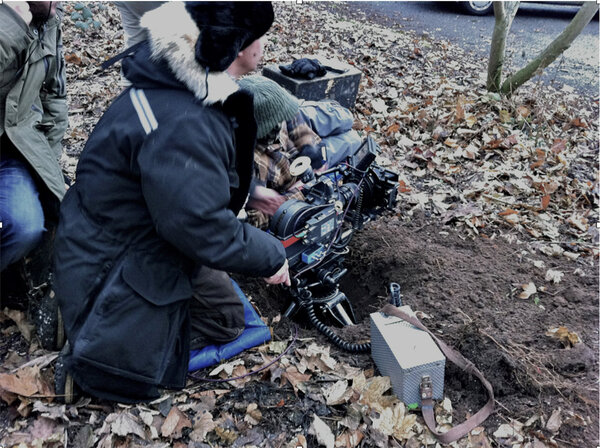
I opted for Fuji filmstock whose color rendering and strong contrast were closer to what I was looking for for this movie. 200T and 500T Eterna.
We worked with Ilab in London, which was very responsive. The negative was scanned via an HD telecine, which became our "digital master" (we couldn’t afford a 2K rescan).
A bestlight from the film used for the final tape to tape that we did in Dublin.
During the filming we privileged the composition of the shots and their evolution by the movement of the actors in space rather than by camera moves. The moments of tension are reflected handheld, but even in these configurations we kept a relatively static point of view.
The idea was to follow these two characters who are traveling without moving.
No matter how much they move, they don’t go anywhere. We also repeated the same shot patterns in several scenes to emphasize this idea. The only real camera move is the last shot of the film which reflects Liz’s evolution and resolve to move forward.
Certain compositions were precise in our heads.
For example discovering Nigel on the ground in epileptic seizure when Liz reverses the car.
To achieve this we built two huge wooden ramps placed behind the car on which it climbed to discover the body on the ground.
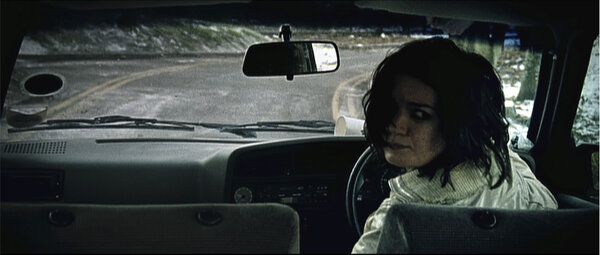
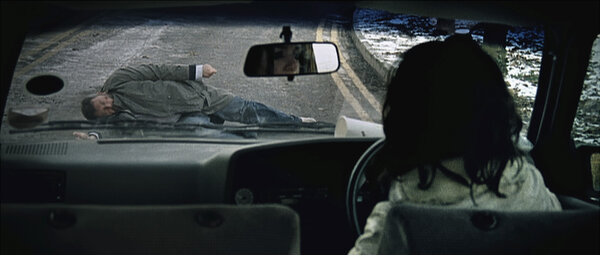
We pulled the car by hand to control its position and not buzz the sound.
We shot the exteriors in natural light and grip lighting.
Winter days are short in Belfast but the latitude gave us consistently low sunshine throughout the day which made me happy.
We played day for night with neutral gradations up and down and no 85 to keep cool tones.
The interiors are illuminated from the outside by a 6K Cinepar through the windows most of the time. And the car interiors with handcrafted battery-powered mini fluorescents.
For the sequence in the river, we mounted the camera on a hihat attached to a buoy naturally called Titanic 2 (since the Titanic was built in the Belfast shipyard just like the Delorean but I digress).
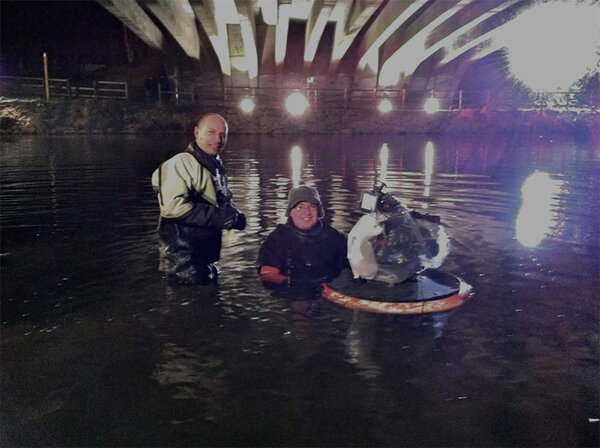
It’s a simple film, despite its busy work schedule and fragile economy.
It happened in collaboration and a strong mutual aid between all the departments.
Awesome teamwork as we like and an excellent memory.
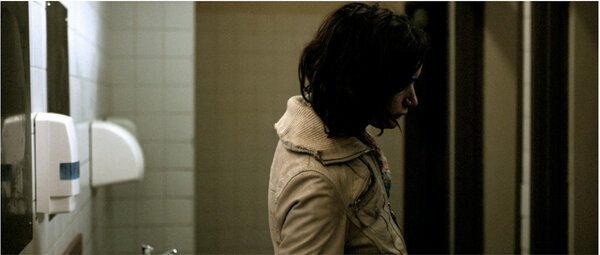
Trailer for Behold the Lamb
Excerpts of Behold the Lamb
Équipe
1st AC : Ray Carlin2 nd AC : Jamie Jackson
Camera utility : Ashling Graham
Key grip : Glynn Harisson
Gaffer : Brian Livingstone
Technique
Camera : Panavision Alga Paris (Arri SR3, Techno Leitz 35 mm set et Cooke 10,4-52 mm zoom)Film Lab : Ilab
Film stock : Fujifilm Eterna 200T & 500T
 En
En Fr
Fr




